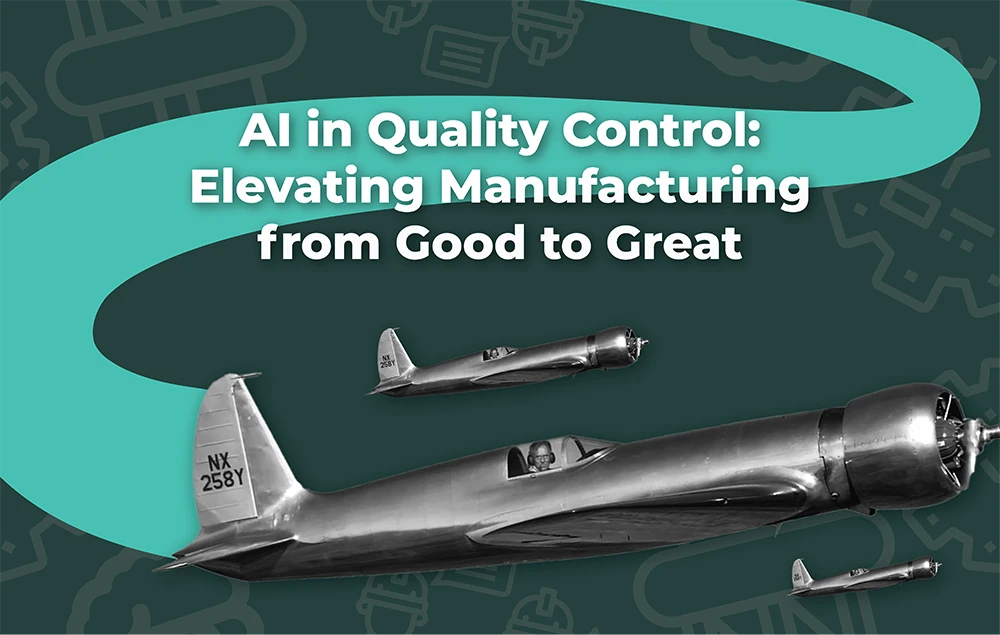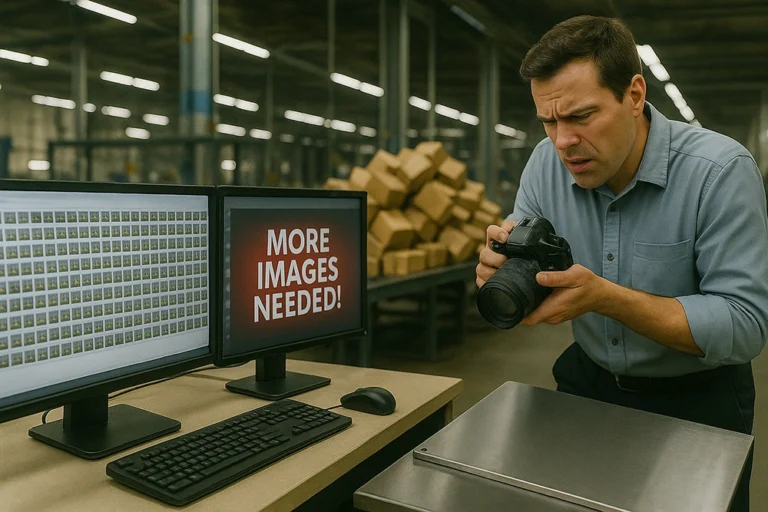When you think of quality control, you might picture someone checking for defects. But quality control is much more than that. It’s about reliability, respect for the craft, and closing the production cycle. It lays the final stepping stones for progress and innovation. It’s the cherry on top of the manufacturing cake.
How Quality Control Drives Innovation in Aviation
In the aviation industry, accurate quality control has sparked countless breakthroughs. Innovations like composite materials, fly-by-wire technology, and efficient jet engines have taken flight. These advancements have raised safety, performance, and efficiency to new heights. They also set the stage for future developments, such as automated flight systems, advanced materials, and more sustainable aviation practices. Quality control ensures these improvements aren’t just ideas but safe, reliable realities ready to transform how we fly.
Take the Hughes H-1 Racer, for example. This iconic aircraft was the last privately built plane to set a world speed record. It showcases the power of careful quality control. Through painstaking attention to detail and rigorous testing, the H-1 achieved groundbreaking success.
The evolution of Quality Control
Our journey from Industry 1.0 to Industry 5.0 has been remarkable. Industry 1.0 brought mechanisation, water, and steam power. Industry 2.0 introduced mass production, assembly lines, and electricity. Industry 3.0 added automation, computers, and electronics. Industry 4.0 created cyber-physical systems, IoT, and advanced networks. Today, Industry 5.0 focuses on mass customisation and human-machine collaboration.
Despite these leaps, traditional quality control methods lag behind. They struggle to keep up with the speed of innovation.
Why Advanced Technology Is Needed
Traditional quality control faces big hurdles. Human error and fatigue increase mistakes. Subjectivity creates inconsistent standards. Inefficiency wastes resources when defects slip by.
AI and computer vision solve these problems. They offer precise, consistent, and fatigue-free inspections. AI systems can spot defects invisible to the human eye. This level of reliability meets modern customer expectations.
Barriers to AI Adoption—and How to Overcome Them
Even with its promise, adopting AI in quality control brings challenges. High-quality data is the lifeblood of AI. Without it, these systems are like engines without fuel. Gathering clean, accurate data takes time and resources.
Creating Strong Data Foundations
Techniques such as automated data labelling and synthetic data generation can help. They build robust datasets with little or no manual effort, speeding up preparation.
Handling Product Variations
Product differences add complexity. AI must handle changes in size, shape, colour, and texture. Non-uniform surfaces can be unpredictable. This diversity requires training and fine-tuning. Pre-trained models, built on diverse data, help AI manage variations and keep performance high.
Ensuring Stability and Security
Concerns about AI stability and security slow adoption. Businesses need confidence that AI will perform under all conditions. Security is also critical, as AI systems can be targets for cyber-attacks.
Robust cybersecurity, ISO-compliant protocols, and continuous monitoring can ease these worries.
Addressing Resistance to Change
The human factor matters too. Employees who have mastered traditional methods may resist new technology. They might fear job losses or doubt AI’s value. Clear education and proof of AI’s benefits can help. Showing how AI boosts human skills and improves quality can create a more positive mindset.
How to get started with AI in quality control
Success begins with the right approach. Here’s how to start strong:
- Start Small with a Proof of Concept (PoC): “In theory, theory and practice are the same. In practice, they are not.” A PoC lets you test AI on a small scale. It helps you see what works without big commitments. Starting small uncovers issues early and allows adjustments before a full rollout.
- Address regulatory barriers early: Engage regulators early. This step ensures your AI meets all necessary standards. For example, follow ISO standards for quality control, FDA rules for medical devices, and EU manufacturing regulations. Staying compliant helps avoid delays.
- Request system freeze capabilities: Imagine hitting pause to lock in your AI’s best performance. System freeze lets you capture stable settings and test thoroughly before updates. It also helps maintain consistent decision-making across your team.
- Conduct Measurement System Analysis (MSA): Regular MSA is like tuning a musical instrument. It ensures your AI stays precise and reliable. MSA detects and corrects performance drift, keeping results accurate over time.
- Implement robust cybersecurity: Cybersecurity protects your AI systems and data. Use ISO-compliant measures to build a strong defence. Good security shields your investment and maintains trust.
Integration Is Key
Advanced tools like system freeze, MSA, and strong security only succeed when they fit into your current processes. Without seamless integration, even the best AI can fall short.
With our platform Spectron™, we specialise in this integration. Whether you’re starting out or improving existing AI, we help make the transition smooth. Our solutions work with your existing systems. We don’t replace what already works—we enhance it.
With our capability to generate perfect data, we deliver perfect products, ensuring that every aspect of your production evolves from good to great… if not even to perfect.




